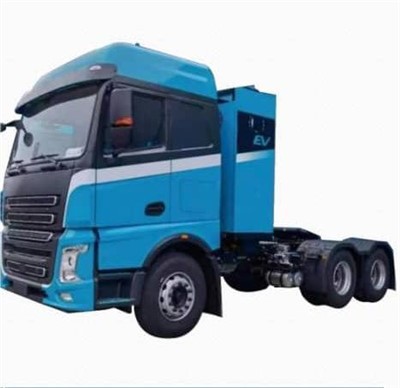Sewage Vacuum Pump: A Comprehensive Guide

Introduction
When it comes to waste management, having reliable equipment is critical. One such piece of equipment that plays a significant role is the sewage vacuum pump. These pumps help in the effective transportation of sewage from residential and commercial areas to treatment facilities. This guide will explore everything you need to know about sewage vacuum pumps, from their working principles to types, maintenance, and practical applications.
What is a Sewage Vacuum Pump?
A sewage vacuum pump is a device designed to transport sewage and wastewater by creating a vacuum system. They are crucial in areas lacking a gravity-fed sewer system. This section will delve into how these pumps work and their components.
How Sewage Vacuum Pumps Work
The operation of a sewage vacuum pump involves creating a pressure difference between the atmosphere and the sewage. The pump uses a motor to drive a pump head, which creates a vacuum that siphons the sewage into the collection tank. From there, the sewage is transported through pipes to a treatment facility.
Key Components of Sewage Vacuum Pumps
- Pump Head: This is the part that creates the vacuum to draw sewage into the system.
- Motor: Drives the pump head and provides the energy required for the suction.
- Storage Tank: Temporarily holds the sewage before it is transported.
- Control System: Automates and monitors the operation of the pump.
- Pipeline System: Directs the flow of sewage from the source to the treatment plant.
Types of Sewage Vacuum Pumps
There are various types of sewage vacuum pumps, each designed to handle different capacities and requirements. Let’s explore some of the most common types.
Positive Displacement Pumps
These pumps trap a fixed amount of sewage and then discharge it into the pipeline. Positive displacement pumps are known for their efficiency in transporting high-viscosity fluids.
Applications of Positive Displacement Pumps
Used in industries such as food processing, oil recovery, and in situations where high pressure is needed.
Centrifugal Pumps
Centrifugal pumps use rotational energy to move sewage. They are more suitable for low-viscosity fluids and are commonly used in urban vacuum systems.
Advantages of Centrifugal Pumps
- High flow rates
- Durable and reliable
- Lower maintenance costs

Choosing the Right Sewage Vacuum Pump
Choosing the right sewage vacuum pump requires assessing several factors to ensure effective waste management. Below are critical considerations to keep in mind.
Capacity Requirements

Determine the volume of sewage the pump needs to handle. This involves analyzing both peak and average wastewater flows to select an adequately sized pump.
Type of Sewage
Consider the specific characteristics of the sewage, such as viscosity and temperature. Different types of pumps may be more suitable based on these factors.
Installation Location
The physical location of the pump influences its design and type. For instance, a pump installed in a remote area might require a more robust model compared to one located in an urban environment.
Installation of Sewage Vacuum Pumps
Installing a sewage vacuum pump properly is vital for optimal performance. Here are some steps involved in the installation process.
Site Preparation
Ensure the site is clear and accessible. Consider factors such as drainage, soil compaction, and environmental regulations.
Piping and Valves
Install pipes with the correct diameter and appropriate valves to manage the flow of sewage effectively. Ensure all connections are leak-proof.
Electrical Connections
Connect the pump to a reliable power source. Follow manufacturer specifications and local electrical codes to ensure safety.
Maintenance of Sewage Vacuum Pumps
Regular maintenance is essential for prolonging the life of sewage vacuum pumps. Below are several maintenance tips and best practices.
Regular Inspections
Routine inspections can help identify potential issues before they escalate. Check for leaks, wear, and tear on the pump components.

Cleaning the Pump
Periodically clean the pump parts to prevent the buildup of sewage residue, which can affect its efficiency. Use appropriate cleaning agents that won’t damage the pump.
Monitoring Performance
Keep track of the pump’s performance metrics, including flow rates and energy consumption. Monitoring helps spot any deviations that may indicate an underlying issue.
Practical Applications of Sewage Vacuum Pumps
Sewage vacuum pumps find applications in various sectors. Here are some practical examples of their use.
Residential Areas
In urban areas without a sewage system, vacuum pumps are used to transport sewage from homes to treatment plants.
Industrial Facilities
Manufacturing plants and factories often use sewage vacuum pumps to handle wastewater produced during operations.
Agricultural Uses
Farmers can use sewage vacuum pumps for managing liquid waste from livestock, ensuring proper disposal and environmental safety.
Innovations in Sewage Vacuum Pump Technology
With advancements in technology, sewage vacuum pumps have seen significant improvements. This section will outline some of the latest innovations in the industry.
Smart Monitoring Systems
New pumps come equipped with sensors that provide real-time data on performance metrics, allowing for proactive maintenance and management.
Energy-Efficient Designs
Modern sewage vacuum pumps are designed to consume less energy, reducing operational costs while maintaining high efficiency.
Cost Considerations
The cost of sewage vacuum pumps can vary significantly based on several factors. Here are some essential points to consider when budgeting.
Initial Purchase Cost
Prices can range from a few hundred to several thousand dollars, depending on specifications and capabilities.
Installation Costs
Installation can add significantly to the overall expense, particularly if extensive site work or electrical upgrades are required.
Operational Costs
Maintenance, energy consumption, and any necessary repairs should be factored into the total cost of ownership.
FAQ Section
What are the advantages of using a sewage vacuum pump?
Sewage vacuum pumps are efficient in transporting waste over long distances, require less space for installation, and can handle a variety of sewage types.
How often should a sewage vacuum pump be maintained?
It is recommended to conduct inspections at least quarterly and perform more comprehensive maintenance annually.
Can sewage vacuum pumps handle solid waste?
Yes, but it depends on the type of pump and its design. Positive displacement pumps are typically better suited for handling solid waste.
What should I do if my sewage vacuum pump fails?
First, turn off the pump and inspect for any obvious issues. If necessary, contact a professional for troubleshooting and repairs.
Are there environmental concerns associated with sewage vacuum pumps?
Improperly maintained or malfunctioning pumps can lead to sewage leaks, which pose environmental hazards. Regular maintenance minimizes these risks.
How do I determine the right size of sewage vacuum pump for my needs?
Evaluate the expected flow rate and volume of sewage to calculate the necessary pump size, often aided by a professional assessment.
